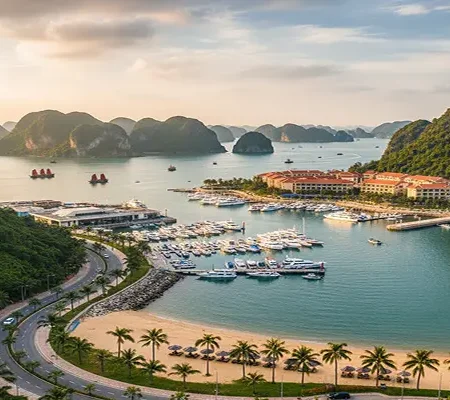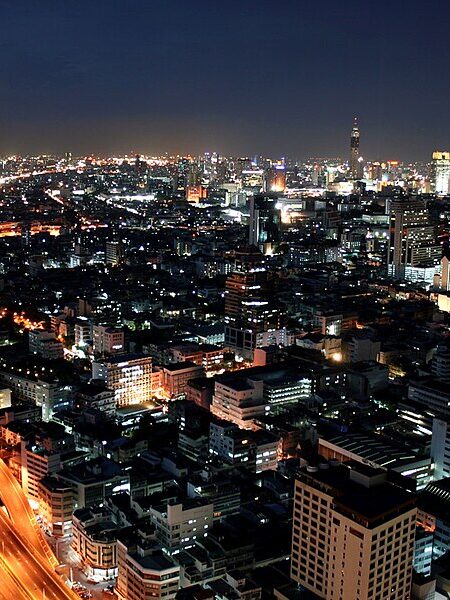Imagine a place where emerald islands pierce turquoise waters, where ancient legends whisper on the breeze, and where every sunset paints the sky in a masterpiece of color. Welcome to Halong Bay , Vietnam’s most breathtaking natural wonder and a UNESCO World Heritage site since 1994. This isn’t just a bay; it’s a mystical realm sculpted over millions of years, home to over 1,600 limestone karsts and islets that rise dramatically from the sea.
Beyond its incredible geology, Halong Bay is a living tapestry of culture and tranquility. Picture yourself gliding past serene floating fishing villages, discovering hidden caves that hold ancient secrets, relaxing on pristine, secluded beaches, and witnessing sunsets that transform the entire seascape into a dream.
Whether you’re an intrepid adventurer, a dedicated nature lover, or searching for a romantic escape, a visit to Halong Bay is an unforgettable journey into the heart and soul of Vietnam. This guide will equip you with everything you need to plan your perfect trip – from getting there and choosing your ideal cruise to exploring its hidden gems and knowing the best time to visit.
- Quick Facts: Your Halong Bay Snapshot
- Journey to the Dragon's Lair: Getting to Halong Bay
- Timing Your Visit: When to Experience Halong Bay's Magic
- Beyond the Cruise: Top Attractions and Things to Do
- Sailing Serenity: Choosing Your Halong Bay Cruise
- Resting Your Head: Where to Stay in Halong Bay
- Insider Tips for a Seamless Trip
- FAQs
Quick Facts: Your Halong Bay Snapshot
Halong Bay is a geological marvel, and understanding its key details can help set expectations for your trip. Here are the essential quick facts:
Distance: Approximately 160 km (100 miles) from Hanoi, the capital of Vietnam, making it an accessible getaway for a day trip or longer stay.
Elevation Gain: Minimal, as most activities involve cruising, kayaking, or light walking in caves and on islands. Cave explorations like Sung Sot Cave may involve climbing a few hundred steps.
Max Altitude: The highest points are on islands like Titov Island, where you can climb about 400 steps to reach a viewpoint at approximately 100 meters above sea level.
Duration: A typical visit ranges from a 4-hour day trip to a 3-day, 2-night cruise. Overnight cruises (2 days, 1 night) are the most popular for a balanced experience.
Difficulty: Easy to moderate. Cruising is leisurely, but activities like kayaking or hiking to viewpoints require basic fitness. Cave explorations may involve uneven steps and humid conditions.
These facts make Halong Bay approachable for travelers of all ages and fitness levels, whether you’re seeking relaxation or adventure.
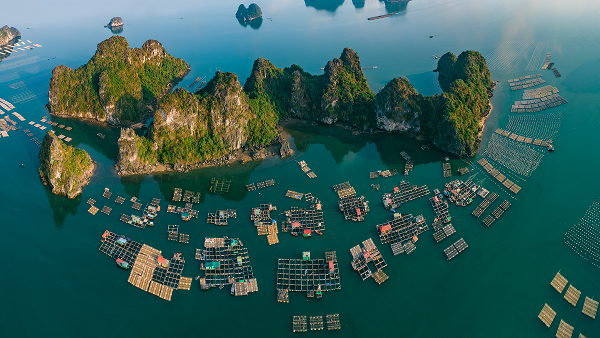
Journey to the Dragon's Lair: Getting to Halong Bay
Getting to Halong Bay is straightforward, with multiple options from Hanoi and nearby cities like Hai Phong. Here’s a detailed breakdown:
From Hanoi: The most common starting point, Hanoi is about 2.5–3.5 hours from Halong Bay by road. You can opt for:
Shuttle Bus: Affordable and widely available, shuttle buses cost around $10–$20 one-way and are offered by cruise operators or tour companies. They pick up from Hanoi’s Old Quarter and include a rest stop.
Private Car/Taxi: For more comfort, hire a private car for $80–$120 round-trip. This is ideal for families or groups.
Seaplane: For a luxurious and quick option, Hai Au Aviation offers 45-minute seaplane flights from Hanoi to Tuan Chau Marina, starting at around $150, with optional 15-minute aerial tours of the bay.
From Hai Phong: If you’re flying into Cat Bi International Airport, Halong Bay is just a 40-minute drive or taxi ride to Tuan Chau Marina, the main cruise departure point.
From Ninh Binh: A 4-hour private car ride or shuttle bus (around $15–$17) connects Ninh Binh to Halong Bay, perfect for combining with a visit to Tam Coc, known as the “inland Halong Bay.”
From Cat Ba Island: Ferries from Cat Ba to Tuan Chau Wharf take about 45 minutes, followed by a shuttle bus to Halong City or Hanoi.
Most cruises depart from Tuan Chau International Marina, a modern port near Halong City. For budget travelers, public buses from Hanoi’s Gia Lam Bus Station to Bai Chay are an option, though less convenient.
Timing Your Visit: When to Experience Halong Bay's Magic
Halong Bay casts its spell year-round, but the best time to visit often depends on your personal preferences:
October to April (Dry Season): This is widely considered the prime time to visit. Expect clear, sunny skies, comfortable temperatures (15–25°C), and calm seas – perfect for cruising and sightseeing.
May to September (Rainy Season): While you might encounter higher humidity and occasional tropical storms, this period sees fewer tourists and often lower prices. Don’t let the “rainy season” deter you entirely; showers are often short-lived, and the dramatic clouds can add to the bay’s mystique.
Photographer’s Tip: For truly magical light and fewer crowds, consider visiting in March or November. The shoulder seasons often offer a perfect balance
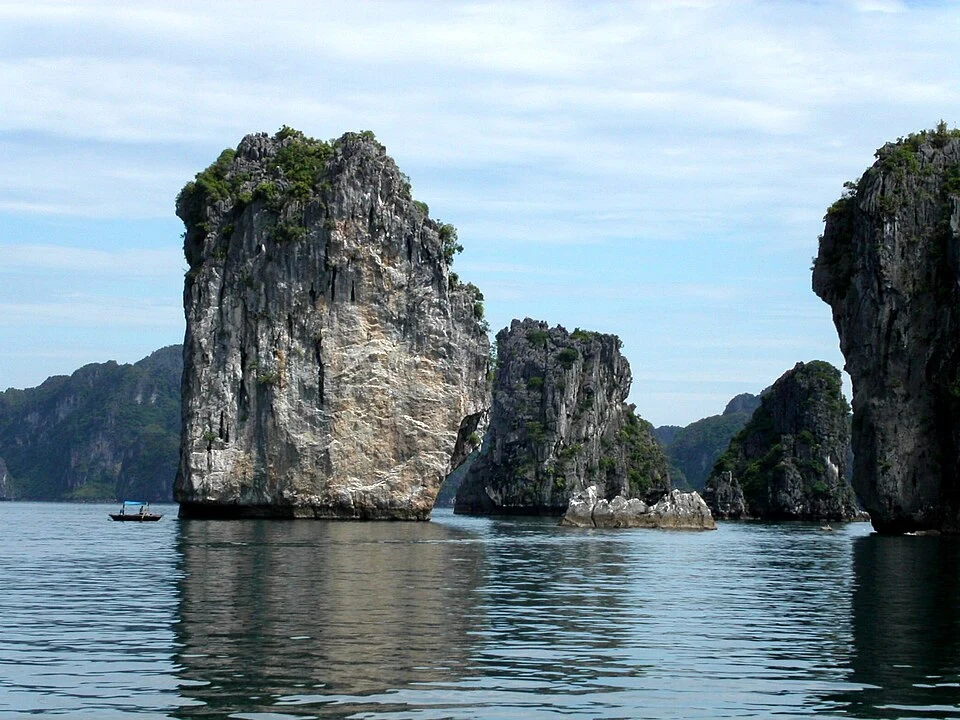
Beyond the Cruise: Top Attractions and Things to Do
Halong Bay is far more than just a scenic cruise; it’s a playground of natural wonders and engaging activities:
Sung Sot (Surprise) Cave: Prepare to be awestruck inside this magnificent cave, one of the largest and most impressive in the bay. Its massive chambers are adorned with shimmering stalactites and stalagmites, dramatically lit to enhance their natural beauty.
Ti Top Island: Hike to the summit of Ti Top Island for arguably the most iconic panoramic views of Halong Bay’s entire expanse. After your climb, relax and swim at the island’s lovely crescent-shaped beach.
Luon Cave: Experience true tranquility by exploring Luon Cave, accessible only by kayak or a traditional bamboo boat. Paddle through its low archway into a serene, hidden lagoon encircled by towering limestone cliffs and vibrant greenery.
Floating Villages: Step back in time with a visit to a floating village like Cua Van. Here, local fishermen have lived in harmony with the sea for generations, offering a fascinating glimpse into a unique, traditional way of life.
Kayaking and Swimming: Get up close and personal with the karsts! Kayaking through the bay’s labyrinthine waterways is an intimate way to discover hidden coves, secluded beaches, and limestone grottoes. Many cruises offer dedicated swimming stops in safe, designated areas.
Explore the Less-Crowded Bays: If you prefer a more serene experience, consider venturing into Bai Tu Long Bay or Lan Ha Bay . Both offer similar stunning beauty with fewer boats, perfect for a peaceful escape.
Sailing Serenity: Choosing Your Halong Bay Cruise
A cruise is the quintessential Halong Bay experience. Here’s how to pick the perfect one for you:
Day Cruises (4–6 hours): Ideal for travelers with limited time, these cruises typically visit a couple of key attractions like a cave and an island, offering a wonderful taste of the bay’s beauty.
Overnight Cruises (1–2 nights): This is the most popular choice, allowing you to fully immerse yourself in the bay’s magic. Enjoy exquisite sunset dinners, try your hand at squid fishing, and wake up to a serene sunrise with a tai chi session on deck.
Luxury Cruises: For an indulgent experience, luxury cruises offer private balconies, gourmet dining, spa services, and impeccable service – perfect for honeymoons or special occasions.
When making your choice, consider your budget, the length of your trip, and your personal travel style. Reputable operators like Indochina Sails, Bhaya Cruises, and Aphrodite Cruises are well-regarded for their safety standards and excellent service.
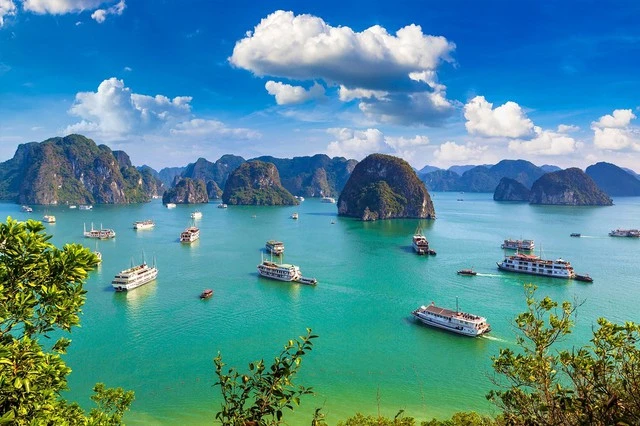
Resting Your Head: Where to Stay in Halong Bay
If you plan to stay on land before or after your cruise, Halong City offers a diverse range of accommodations:
Luxury: Indulge at the Vinpearl Resort & Spa Halong or the elegant Wyndham Legend Halong.
Mid-Range: Comfortable and convenient options include the Halong Boutique Hotel and the Royal Lotus Hotel.
Budget: For cost-effective stays, consider places like Ha Long Happy Hostel or City Bay Palace Hotel.
For those seeking a more tranquil land-based experience, Tuan Chau Island is an excellent choice, offering peaceful beaches and convenient access to the main cruise piers.
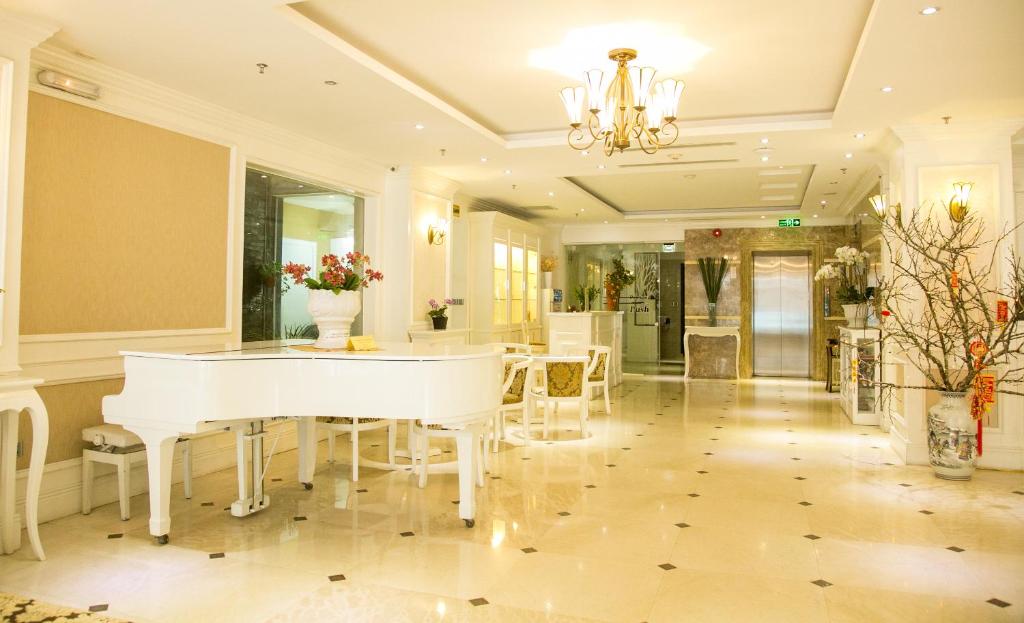
Insider Tips for a Seamless Trip
- Book Ahead: Cruises, especially during peak season, can fill up quickly. Secure your spot well in advance.
Pack Smart: Bring lightweight clothing, a wide-brimmed hat, plenty of reef-safe sunscreen, and motion sickness tablets if you’re prone to seasickness.
Respect Nature: Halong Bay’s beauty is fragile. Help preserve it by avoiding littering and choosing eco-friendly tour operators.
Stay Connected (or Not): Wi-Fi can be spotty on board, so download any maps, books, or entertainment you might want before your trip. Embrace the digital detox!
Check Forecasts: Tropical storms can occasionally lead to cruise cancellations, especially during the rainy season. Keep an eye on the weather leading up to your departure.
Halong Bay FAQs
Q1. How many days should I spend in Halong Bay?
Most travelers find a 2-day, 1-night cruise is ideal for experiencing the highlights. For a more relaxed and in-depth exploration, consider a 3-day, 2-night trip.
Q2. Is Halong Bay suitable for families with kids?
Absolutely! Many cruises offer family-friendly cabins, safe kayaking options, and engaging onboard activities tailored for children. Just be sure to check with your chosen cruise line.
Q3. Can I visit Halong Bay on a budget?
Yes, it’s definitely possible! Look for budget-friendly day trips or mid-range overnight cruises. Traveling during the off-season or opting for shared cabins can also significantly reduce costs.
Q4. Is it safe to swim in Halong Bay?
Yes, swimming is permitted in designated safe areas, always under the supervision of your cruise staff or guide. Always follow their safety instructions.
Q5. Are drones allowed in Halong Bay?
You will generally need special permission to fly a drone in Halong Bay. Unauthorized use can lead to fines or confiscation of your equipment. It’s best to check with local authorities or your cruise operator beforehand.








